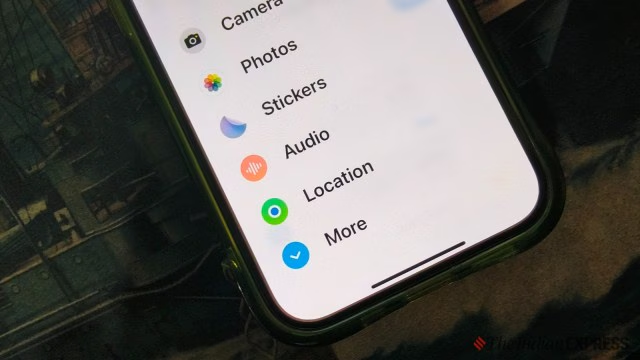You Can Now Send Transcribed Voice Messages with iMessage (But There’s a Catch)
Calling all iPhone users who love the convenience of voice messages but sometimes crave the written word! Apple’s iOS 16 update, currently in beta testing, has introduced a hidden gem – the ability to send auto-transcribed voice messages directly through iMessage. This feature, while not yet officially available to the public, has generated a lot of buzz. Here’s a breakdown of how it might work (based on beta testing experiences) and some important things to keep in mind.
Speak Your Mind, See it in Text: A Glimpse into Auto-Transcribed Voice Messages
Imagine this: you’re on your way to work and have a quick message for a friend. Instead of typing, you simply record a voice message explaining your plans for the evening. With auto-transcription in iMessage, your spoken message would be automatically converted into text, appearing alongside the audio recording for your friend to read at their convenience.
Here’s How it Might Work (Based on Beta Testing)
While Apple hasn’t revealed all the official details yet, based on beta testing experiences, here’s a possible scenario for sending auto-transcribed voice messages:
-
Record Your Message: Open the Messages app and navigate to your desired conversation. Tap and hold the microphone icon to record your voice message as usual.
-
Transcription Magic Happens: Once you finish recording and release the button, iMessage might automatically analyze the audio and convert it into text. This transcribed text would appear below the audio recording within the chat window.
-
Review and Send: Before sending, you can review the transcribed text to ensure accuracy. You might have the option to edit any errors or make adjustments before sending the message with both the audio and transcribed text.
Potential Benefits of Auto-Transcribed Voice Messages
This new feature could offer several advantages for iPhone users:
- Convenience for Busy Individuals: Quickly send a message on the go without having to type, ideal for situations where using the keyboard is inconvenient.
- Accessibility for Everyone: This feature can be helpful for users who prefer reading text over listening to audio messages, or for those with hearing difficulties.
- Multitasking Made Easier: Review and respond to voice messages while performing other tasks, such as browsing the web or checking emails.
Important Considerations: Still Under Development
It’s important to remember that auto-transcribed voice messages are currently in beta testing and not yet available to the general public with the official iOS 16 release. There are also some key things to keep in mind:
- Accuracy Might Vary: Speech recognition technology is not perfect, and transcription accuracy can be affected by factors like background noise, accents, and speaking speed.
- Limited Languages: The feature might only support a specific set of languages initially.
- Privacy Concerns: While Apple prioritizes user privacy, it’s important to be aware that voice recordings used for transcription might be uploaded to Apple’s servers for processing.
The Future of Auto-Transcribed Voice Messages on iPhone
The introduction of auto-transcribed voice messages in iMessage beta testing hints at exciting possibilities for the future. Here’s what we might expect:
- Improved Accuracy: As speech recognition technology continues to evolve, the accuracy of transcriptions is likely to improve over time.
- Wider Language Support: The feature might eventually support a broader range of languages, catering to a more global audience.
- Enhanced User Experience: Apple might introduce additional features, such as the ability to edit transcripts directly within iMessage or highlight specific sections of the transcribed text.
A Wait-and-See Approach
While the ability to send auto-transcribed voice messages is a promising addition, it’s important to wait for the official release with iOS 16 and see how Apple implements the feature. When it does become available, users can then decide if the convenience outweighs potential limitations like accuracy or privacy concerns.
